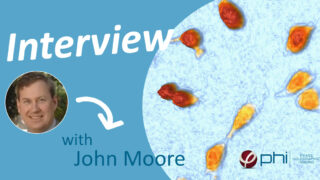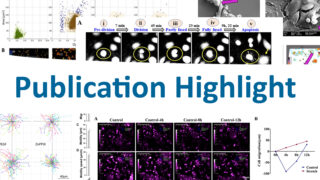Digital holographic microscopy:
A non-invasive and versatile tool for cytocentric measurement in regenerative medicine
PHI, together with our alliance for advancing cell-based biomanufacturing with Wake Forest Institute for Regenerative Medicine, BioSpherix, global analytics company SAS and others, have recently published a paper in Frontiers in Medical Technology about the critical cell and process parameters for cell and tissue products as well as technologies available in Regenerative Medicine.
Here we highlighted more about the “what, why and how” of cyctocentric measurement.
Regenerative medicine is a field that aims to create new tissues and organs from living cells. It has the potential to treat many diseases and injuries that currently have no cure. But how do we make sure that the cells we use for regenerative medicine are healthy, functional and reliable?
That’s where cytocentric measurement comes in. Cytocentric measurement is to measure the quality and performance of cells and tissues at a cellular or pericellular level. It helps us to understand what the cells need, how they respond to different conditions, and how they form tissues.
What is cytocentric measurement?
Cytocentric measurement is based on the idea that cells are the center of everything we do in regenerative medicine. Cells are not just passive materials but are living entities that have their own needs, preferences and behaviors.
Cytocentric measurement uses technologies that can sense and monitor the critical process parameters (CCPs) that affect the quality and function of cells and tissues. These include parameters such as oxygen, carbon dioxide, pH, temperature, cell viability, cell proliferation, cell differentiation, cell morphology, cell motility, and more.
By measuring these CCPs at a cellular or pericellular level, we can get a more accurate and comprehensive picture of the state and performance of our cell and tissue products. We can also use this information to optimize and control the culture conditions for better reproducibility and reliability.
Why are cytocentric principles important?
Cytocentric principles are important because they can help us improve the quality and reproducibility of cell and tissue products for regenerative medicine. By following cytocentric principles, we can reduce variability and increase consistency in cell and tissue production; enhance the functionality and performance of cell and tissue products; accelerate the translation of regenerative medicine therapies, but also increase the confidence and trust of regulators, clinicians, patients, and investors.
How can DHM help with cytocentric measurement?
DHM is a powerful tool for cytocentric measurement that can help us to improve our understanding and control of cell and tissue products for regenerative medicine. It is a non-invasive optical technique that can measure parameters such as cell morphology, volume, density, and motility simultaneously and continuously, without disturbing the cells or tissues. DHM can also help monitor the quality and performance of cell and tissue products during production, and compare the characteristics and functionality of different cells, provide quantitative and qualitative data that can be analyzed using various software tools.



